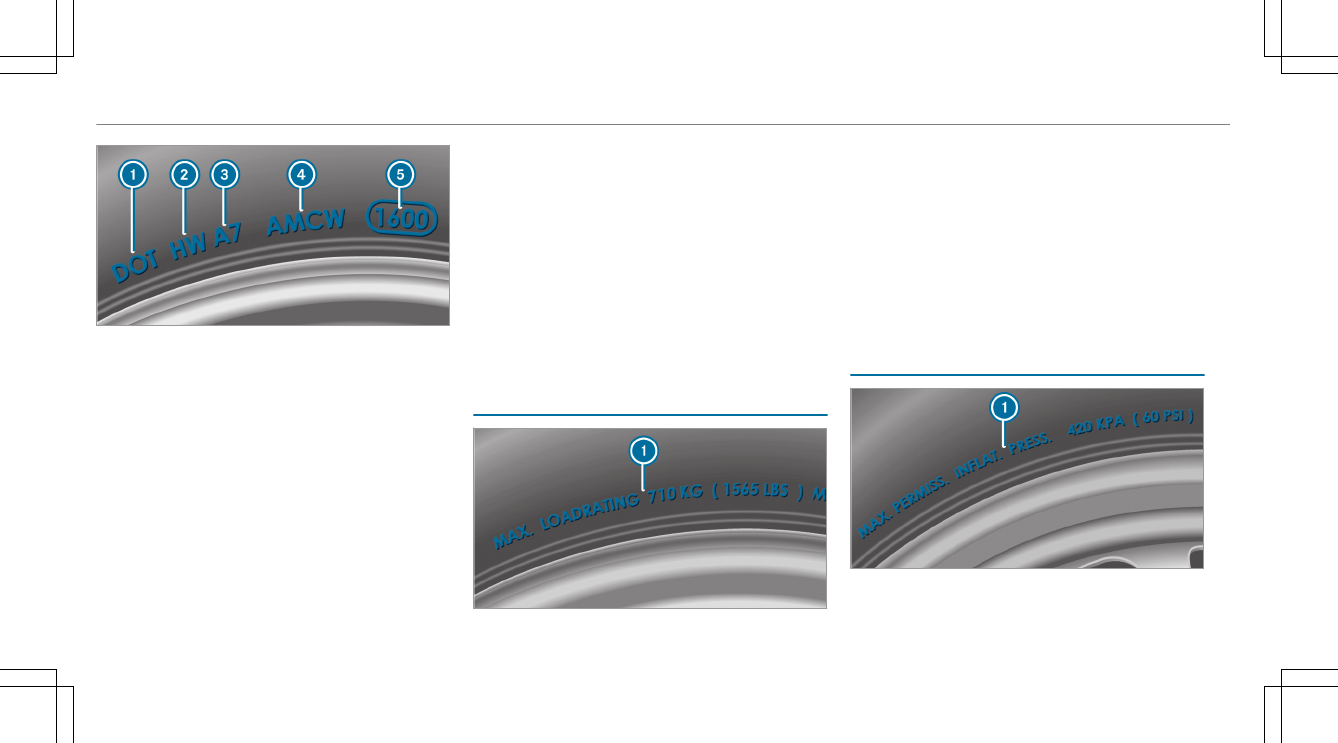%
The data shown in the image is example
data.
The TIN is a unique identification number to
identify tires and comprises the following:
R
DOT (Department of Transportation): tire
symbol marks 1 indicating that the tire
complies with the requirements of the US
Department of Transportation.
R
Manufacturer identification code: manu‐
facturer identification code 2 contains
details of the tire manufacturer. New tires
have a code with two symbols. Retreaded
tires have a code with four symbols. Further
information on retreaded tires (/ page 534).
R
Tire size: identifier 3 describes the tire
size.
R
Tire type code: tire type code 4 can be
used by the manufacturer as a code to
describe specific characteristics of the tire.
R
Manufacturing date: manufacturing date
5 provides information about the age of a
tire. The 1st and 2nd positions represent the
calendar week and the 3rd and 4th positions
state the year of manufacture (e.g. "3208"
represents the 32nd week of 2008).
Information on the maximum tire load
%
The data shown in the image is example
data.
Maximum tire load 1 is the maximum permissi‐
ble weight for which the tire is approved.
Do not overload the tires by exceeding the speci‐
fied load limit. The maximum permissible load
can be found on the vehicle's Tire and Loading
Information placard on the B-pillar on the driv‐
er's side (/ page 522).
Specifications for maximum tire pressure
%
The data shown in the image is example
data.
528
Wheels and tires

